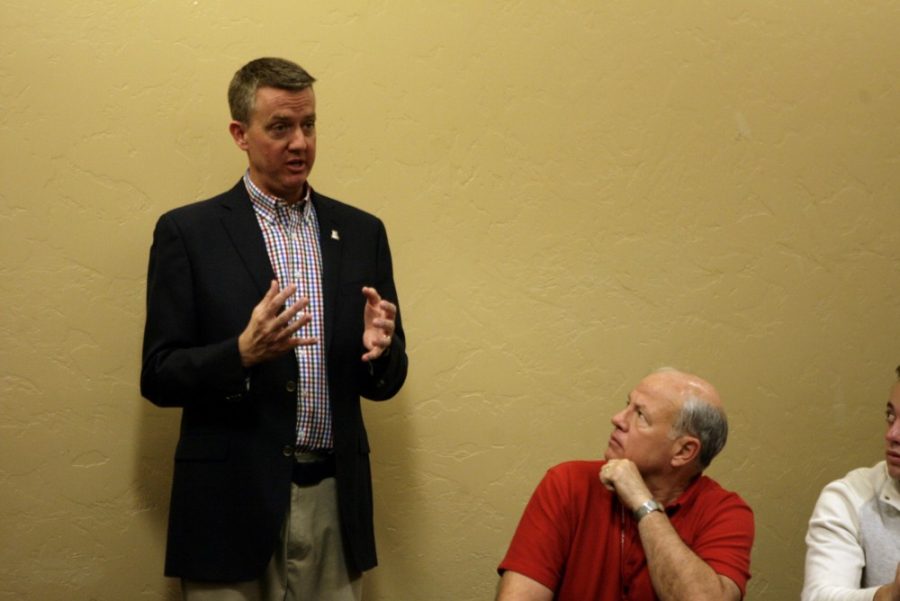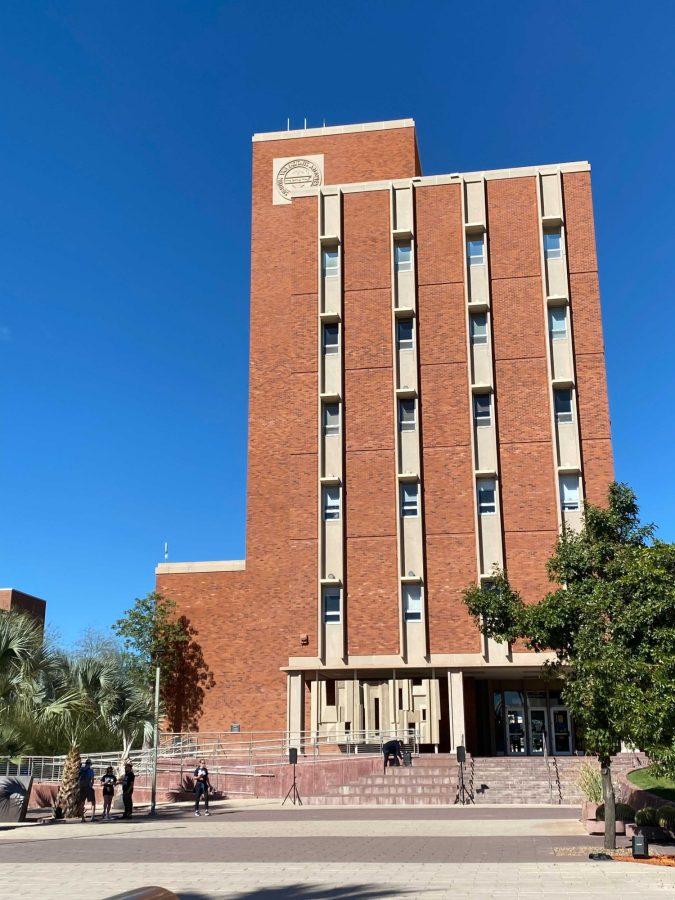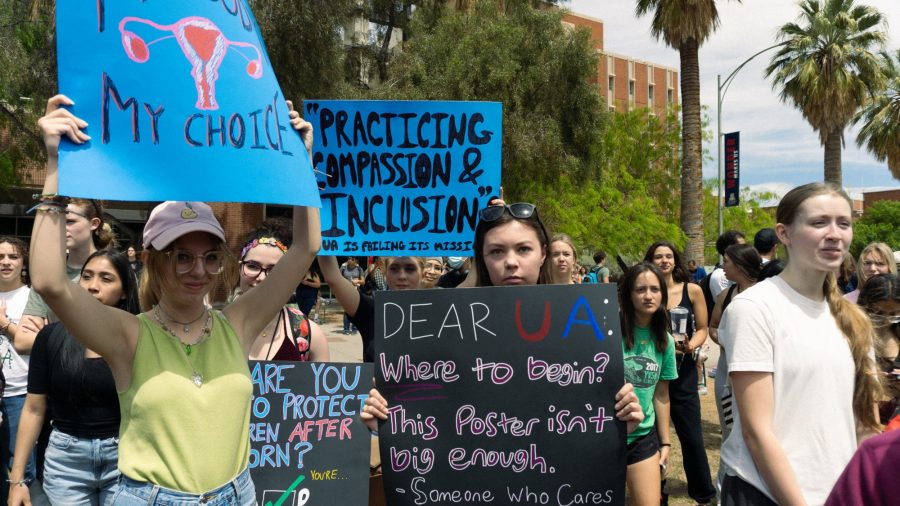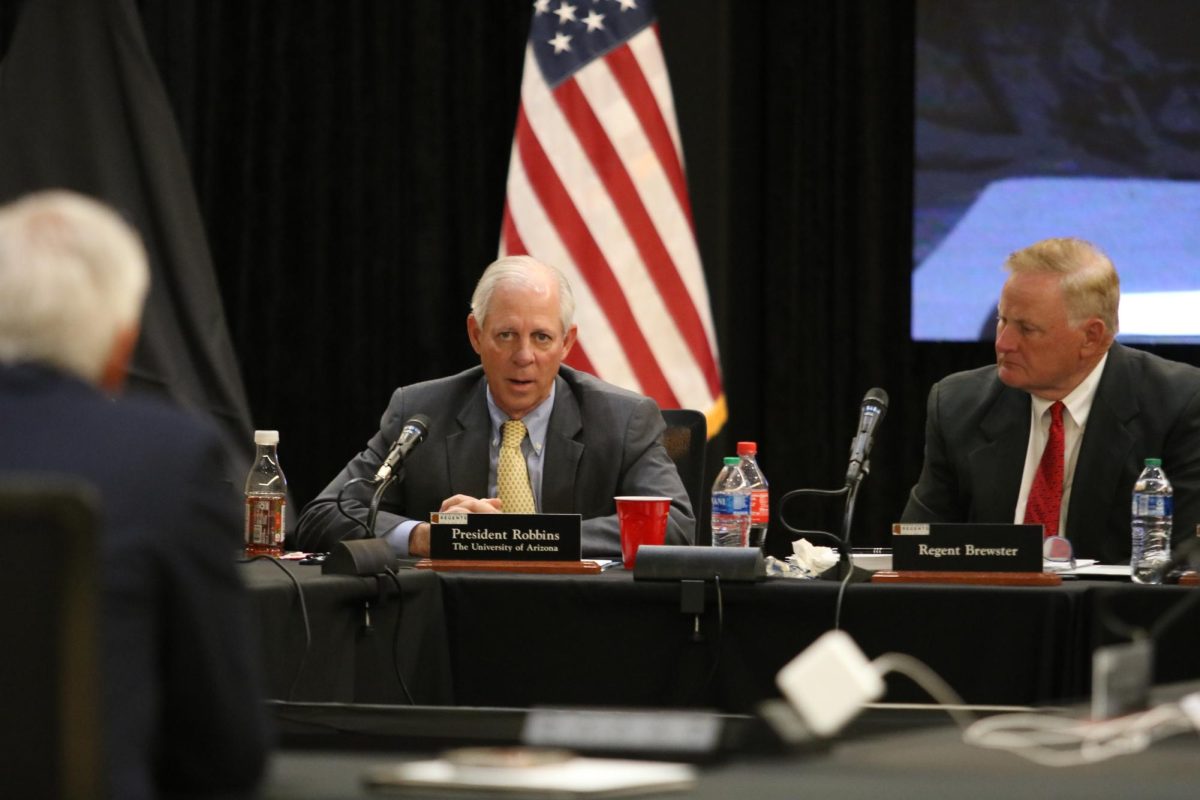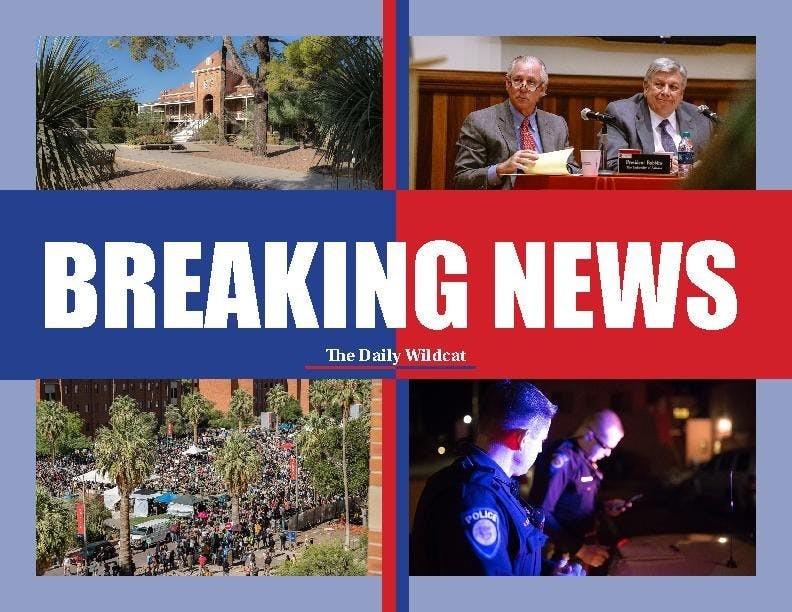UA Athletics Director Greg Byrne presented the controversial new athletics fee to the Associated Students of the University of senate Wednesday evening during the Senate’s weekly meeting. Here’s the breakdown of what the fee is and why Byrne proposed it.
THE FEE EXPLAINED
University of Arizona Athletics Director, Greg Byrne, presented the controversial new athletics fee to the ASUA senate Wednesday evening during the Senate’s weekly meeting.
“It’s to address Arizona Stadium,” Byrne told the Senators.
To be more specific, there are about $150 million worth of things that need to be addressed, according to Byrne.
He went on to explain that the 56,000-person stadium has largely gone un-updated since its original completion in 1928. Facilities like the bathrooms, bleachers and concessions, among other things, are in dire need of renovation for the stadium to suit its current usage.
“We’ve taken some people on a tour during this football season — on game day — so that they can see what we are asking our fans to go through to come to a game … and it’s not pretty, what we’re asking our fans to do,” Byrne said.
The idea for the fee originally was tossed around last year after Arizona State University implemented its own athletics fee. At that time, Byrne said he had no plans to implement a similar fee.
In the past, the Arizona Athletics department has almost entirely funded its construction and renovation endeavors in gifts and ticket sales – both the $72 million dollar price tag for the newly completed Lowell-Stevens Football Facility and the $30 million worth of renovations done to McKale Center were entirely funded by gifts – with the exception being the actual construction of McKale Center in the 1970s.
Arizona Athletics has had an extremely aggressive fundraising campaign in recent years. Giving from donors is at an all-time high and according to Byrne, $135 million of the total $219 million fundraised by athletics in the past 10 years was donated in the last five years. On top of that, some of the largest gifts that athletics have ever received also happened in the last five years.
This aggressive fundraising and the generous giving of Arizona Athletics’ donors is not a sustainable funding source.
“Quite frankly, when you measure our donor base – the ability to address the needs at Arizona Stadium – we cannot do it by giving alone,” Byrne said.
That is where the idea for the fee came in. Last fall, faced with a stadium in dire need of updates and a depleted donor base, Byrne and the Arizona Athletics department began to think about implementing an athletics fee of their own.
Read more details on the proposed fee here.
Even with this depleted donor pool, Jeremy Sharpe, associate director of communication services for the department, made it clear that fundraisers agreed to an “aggressive fundraising goal” of $50 million to help offset the costs. In addition to this, a fee will also be tacked on to ticket prices so that the cost of the project would be shared between students and fans.
“We have a major issue with Arizona Stadium. I promise you we have spent countless hours trying to find solutions — we’re not taking this lightly,” Byrne said. “We understand what we’re asking for is significant … and we think this is the best solution as a shared effort to make this happen, and we think it’s good for our university.”
NEW TRANSPARENCY
Byrne, who had scheduled to speak during the ASUA meeting the week prior, directly addressed some of the senate’s concerns with the fee’s transparency during his presentation.
One senator in particular, Sen. Joe Zanoni, who has vocalized his concerns with the fee’s transparency since word of the fee first got out, told the Daily Wildcat that the creation of the proposed fee “has the troubling appearance of a backroom deal,” a concern that Byrne made a point to address.
“We couldn’t come to you the very first day we started discussing this and say, ‘Hey we’ve got an idea, we have no detail, we have no information for you but we’re thinking about it,’” Byrne said.
He did, however, go on to say that ASUA President Manny Felix was involved in the exploration from the beginning and that the intention had always been to bring the fee forward to the senate after enough of a plan had materialized.
“That’s today,” Byrne said. “That’s where we worked enough on this to bring this forward to you to get your feedback, to hear what you’re saying, and our goal out of this – and I mean it very seriously – was to be as transparent as we possibly could be.”
In response to a question posed by Sen. Maddy Bynes, regarding how students were going to be further involved in the discussion on the proposed fee, Byrne said that they would possibly obtain student input through a survey. He also said that he would continue to visit and update the senate as the process continued, so that they would better be able to serve their constituents.
Zanoni felt that a survey would be key to ensure that the student voice was accounted for in the final decision.
“We need to get a survey to the students,” Zanoni said. “The students are the ones who will be writing the check to athletics, and they need to be the ones surveyed in a respectable fashion.”



